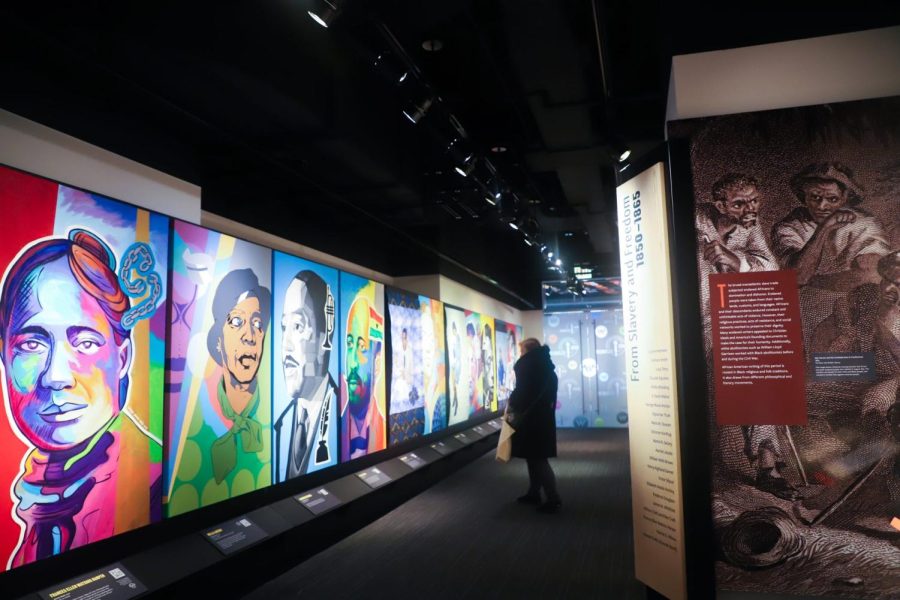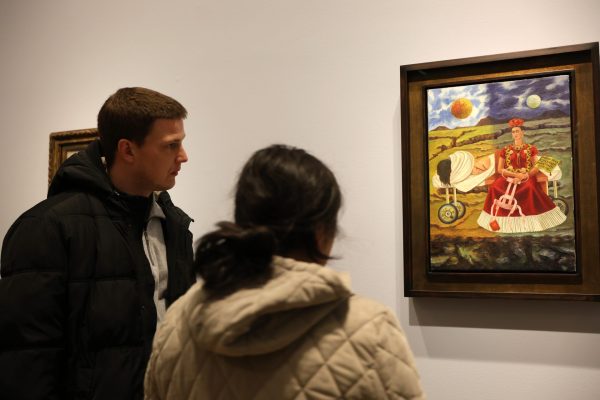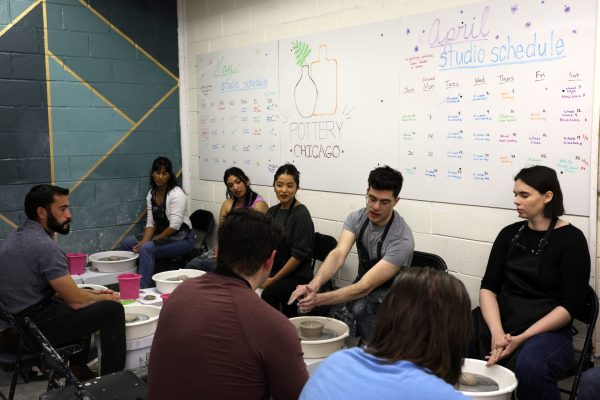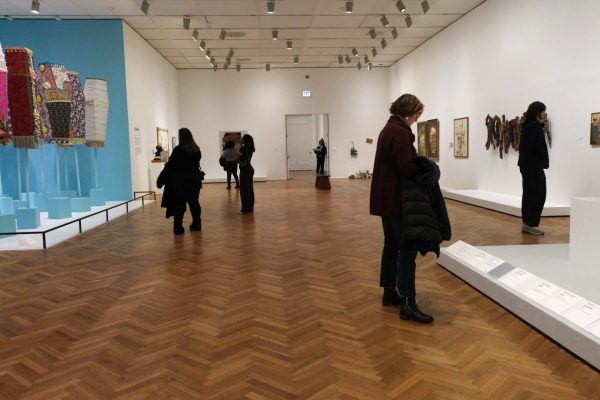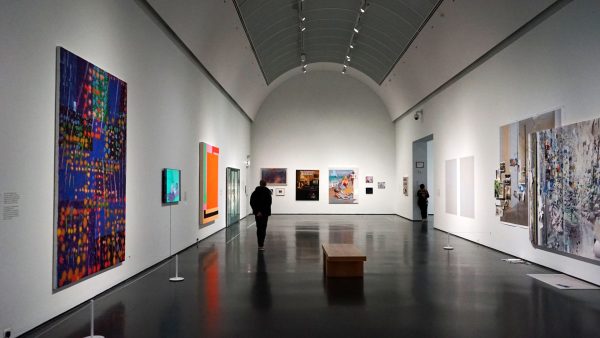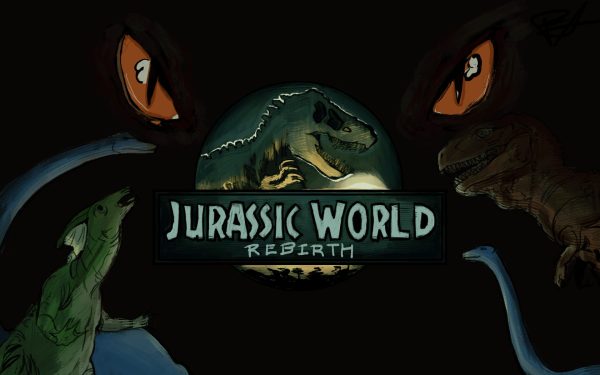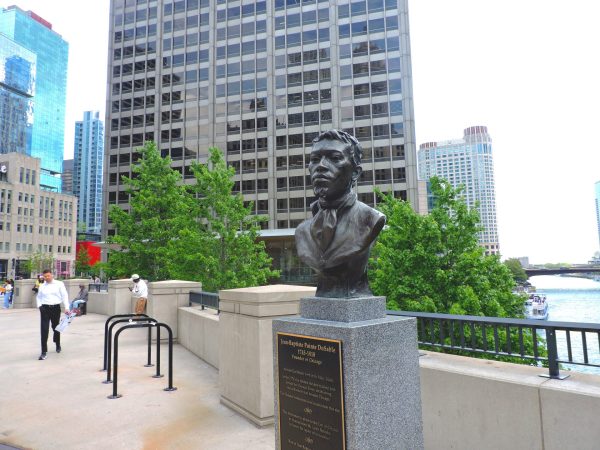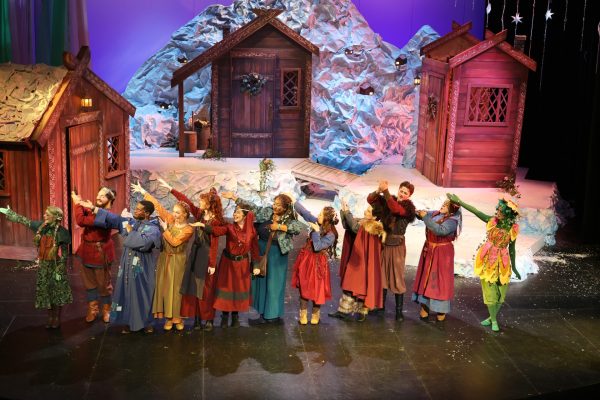“It’s powerful in its own right:” American Writers Museum’s latest exhibit highlights race, power and resilience
Credit: Nadia Carolina Hernandez
16 individual portraits of Black writers line the walls of the American Writers Museum.
When Dr. Pauli Murray – civil rights activist and Episcopal priest – published her only book of poetry titled “Dark Testament and Other poems” in 1970, readers paid little attention to the collection.
Five decades later, Murray’s work stands at the forefront of the American Writers Museum’s latest exhibit “Dark Testament: A Century of Black Writers on Justice.” Spanning from the 1800s to present day, the exhibition features works from figures like abolitionist Frederick Douglass to memoirist Maya Angelou.
Running until Sept. 17, 2023 “Dark Testament” serves as an examination into racial injustice, freedom and the intersectionality between race, class and gender.
Museumgoer and recurrent visitor to the gallery Patty, who requested her last name not be used, expressed awe over the latest display.
“This is very powerful. I’m drawn to anything with color,” Patty said. “I like the symbolism that’s showing what they stand for. That’s pretty powerful.”
Housed in two parts of the museum, the exhibit’s focal point resides within the Meijer Gallery where visitors find a timeline of acclaimed writers’ works. Stretching from 1850-1865, the oldest period of publications known as “Slavery and Freedom” highlights the work of Douglas and Harriet Tubman. Residing at the gallery’s end,“Civil Rights & the Black Arts Era,” contains work from 1960-1975 and features paperbacks from Octavia E. Butler and Martin Luther King Jr.
Across from these texts stands 16 separate five-foot-tall portraits, fashioned from a variety of canvas and textiles crafted by local artists. Through a mixture of paint and fabric, the faces of revolutionaries like Malcolm X and trailblazers such as Ida B. Wells and Maya Angelou are honored alongside their invaluable contributions to literature.
For Patty, the scarlet and gold of Ida B. Wells’ tapestry immediately caught her attention.
“Being from Chicago I went for Ida B. Wells,” Patty said. “All the beautiful colors are so eye-catching, it’s just so unique.”
For Francesca Royster, DePaul english professor, Black literature goes beyond the traditional bounds of understanding the past.
“African-American literature is a really important part of understanding American culture, learning about African American creativity and the imagination,” Royster said. “It’s powerful in its own right, but it’s also an important way for people to understand how African American people have created art in response to struggle.”
Teaching Black authors goes beyond their literature, but also their scholarly work. Heather Montes-Ireland, Women & Gender Studies assistant professor, includes Black feminist scholars throughout her syllabi. She includes scholars such as Bell Hooks, Audre Lorde and Patricia Hill-Collins. Lorde is featured throughout the “Dark Testament” exhibit.
“I am always drawing from women of color feminist thought,” Montes-Ireland said. “These writers were writing from their funds of knowledge and from a nexus of experience and all sorts of things. These authors have provided in so many ways the foundational concepts.”
Despite most of Lorde and Hooks’ works being written in the ‘60s and ‘70s, these writers were writing about police brutality and other issues relevant today.
“[Lorde] can touch on these social issues that are so profound because she’s not only trying to solve one particular problem, she was really trying to think about entire systems of oppression from her very, very intersectional viewpoint,” Montes-Ireland said.
The significance of Black literature cannot only be defined by trials and tribulations. Readers must celebrate Black joy, success and love alongside narratives of struggle and resilience, according to Royster.
“I teach James Baldwin, you know his novel ‘Go Tell it on the Mountain,’ but also his essay “Notes of a Native Son,” Royster said. “He’s talking about really particular things that were happening in New York, including race riots and his own family’s struggle with poverty…but it’s very much connected to right now. That sense of urgency and desire to understand.”
Despite not yet visiting the exhibit, Royster’s praised its variety and depth.
“I think what’s great about the museum and the exhibit is that it’s really foregrounding a lot of different kinds of authors and different kinds of writing so that we can get a more diverse view of what Black or African American literature is,” Royster said.
No matter how long ago it may seem, Black authors’ works stand the test of time, according to Montes-Ireland.
“Writing feminist theory and writing testimony on the stories of our lives is that we can leave that for others like far beyond just the timeframe of our own life…has a kind of an eternal feel to it,” Montes-Ireland said.


